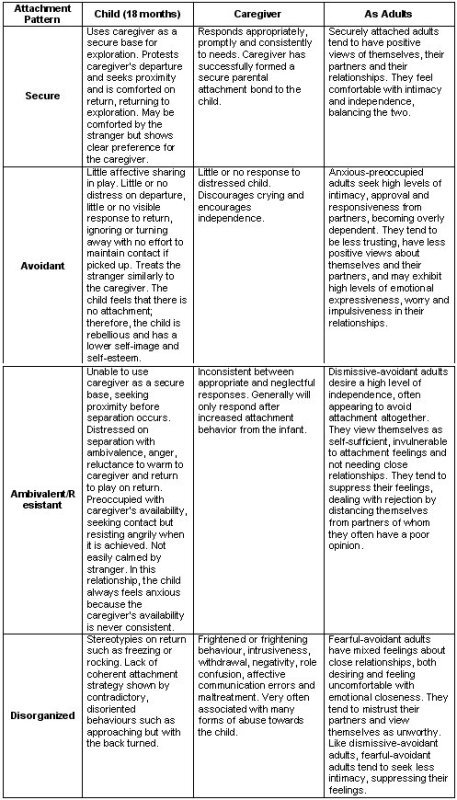David Baxter PhD
Late Founder
Couples' Conflict Style Affected By Infant Attachment Patterns
by Meg, Mental Health Blog
March 5, 2011
A recent study, published in the journal Psychological Science, has discovered a link between the way in which couples' recover from conflict and their attachment patterns as infants.
Interestingly, a look back at the observations of these participants in the seventies at age 12 to 18 months of age suggests that their current behaviour is associated with their attachment type as infants. ?People who were more securely attached to their caregivers as infants were better at recovering from conflict 20 years later. This means that if your caregiver is better at regulating your negative emotions as an infant, you tend to do a better job of regulating your own negative emotions in the moments following a conflict as an adult.?
Fortunately, researchers also uncovered evidence to suggest that those individuals that were categorized as insecurely attached infants who are in relationships that recover well from conflict are couples that are most likely to stay together so long as one partner can quickly disengage from the conflict and avoid dwelling on any resulting negative thoughts and emotions.
?This is some of the first evidence that romantic partners play an important role in buffering the potential harmful effects from poor experiences earlier in life.? It is refreshing to know that the people in our lives can play such an important role in altering the consequences of our earlier life experiences.

More:
by Meg, Mental Health Blog
March 5, 2011
A recent study, published in the journal Psychological Science, has discovered a link between the way in which couples' recover from conflict and their attachment patterns as infants.
?Attachment theory describes the dynamics of long-term relationships between humans especially as in families and life-long friends. Its most important tenet is that an infant needs to develop a relationship with at least one primary caregiver for social and emotional development to occur normally, and that further relationships build on the patterns developed in the first relationships.?
From this theory, Mary Ainsworth, a developmental psychologist, identified three attachment styles, or patterns, that a child may have with attachment figures. These include secure, anxious-avoidant (insecure) and anxious-ambivalent or resistant (insecure). A fourth pattern, disorganized attachment, was identified later.
?Attachment theory was extended to adult romantic relationships in the late 1980s by Cindy Hazan and Phillip Shaver. Four styles of attachment have been identified in adults: secure, anxious-preoccupied, dismissive-avoidant and fearful-avoidant. These roughly correspond to infant classifications: secure, insecure-ambivalent, insecure-avoidant and disorganized/disoriented.?
Accordingly, researchers at the University of Minnesota studied a cohort of couples born in the mid-seventies while they engaged in a discussion about a subject they disagreed on followed by a ?cool down? discussion about a subject they agreed upon. Researchers noticed an interesting phenomenon during the so-called cool down period. Some couples were fully capable of making the transition from the disagreed upon subject to the agreed upon subject, while other partners or couples could not move on from the conflict discussion.
Interestingly, a look back at the observations of these participants in the seventies at age 12 to 18 months of age suggests that their current behaviour is associated with their attachment type as infants. ?People who were more securely attached to their caregivers as infants were better at recovering from conflict 20 years later. This means that if your caregiver is better at regulating your negative emotions as an infant, you tend to do a better job of regulating your own negative emotions in the moments following a conflict as an adult.?
Fortunately, researchers also uncovered evidence to suggest that those individuals that were categorized as insecurely attached infants who are in relationships that recover well from conflict are couples that are most likely to stay together so long as one partner can quickly disengage from the conflict and avoid dwelling on any resulting negative thoughts and emotions.
?This is some of the first evidence that romantic partners play an important role in buffering the potential harmful effects from poor experiences earlier in life.? It is refreshing to know that the people in our lives can play such an important role in altering the consequences of our earlier life experiences.

More:
